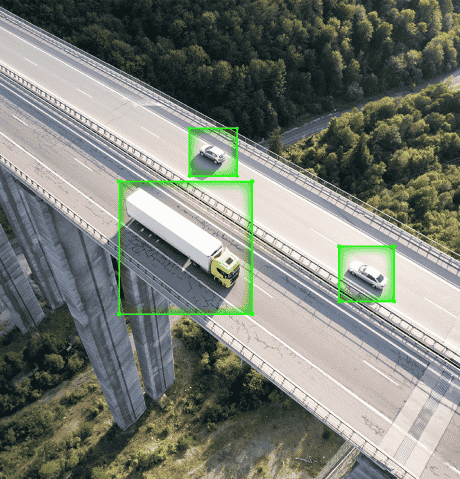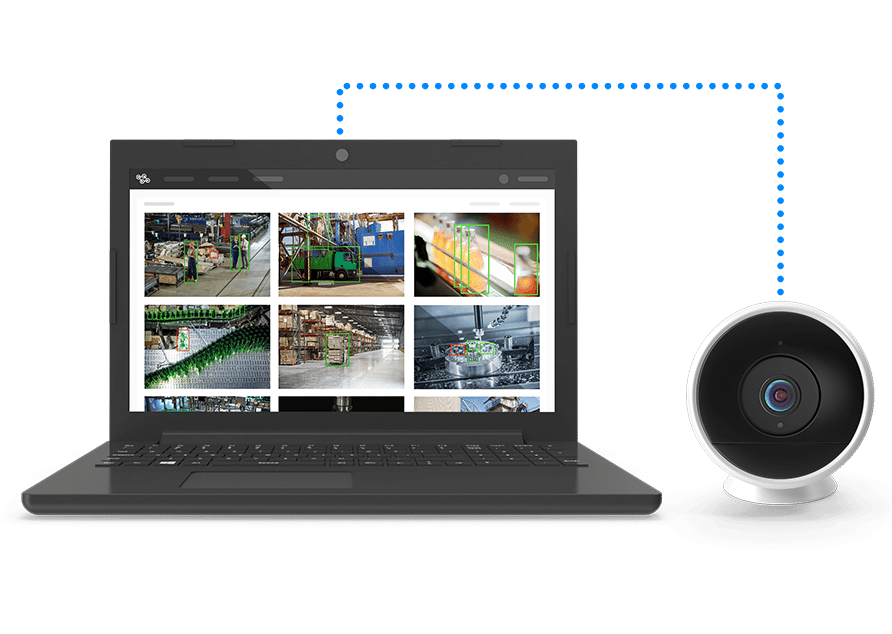Computer Vision: A Comprehensive Guide
Explore the dynamic realm of computer vision through our comprehensive guide, unveiling its transformative impact on diverse industries. Discover how Matroid's cutting-edge solutions empower businesses with AI-driven insights and efficiency in the world of visual data.

What is computer vision?
Computer vision, at its core, seeks to grant machines the powerful capability of 'seeing' and interpreting the world as humans do. This intricate field of study focuses on enabling machines to process, analyze, and make decisions based on visual data, be it from images or videos. The fundamental objective is to bridge the gap between digital data and symbolic information.
In today's digital era, the importance of computer vision has grown manifold. With an explosive increase in visual content due to smartphones, IoT devices, and digital media, the manual interpretation of such vast data becomes impractical. As such, computer vision emerges as the linchpin in translating this visual deluge into actionable insights and facilitating next-generation technologies like autonomous vehicles, augmented reality, and sophisticated surveillance systems.
The History
The Evolution of Computer Vision

The inception of computer vision as a distinctive field can be traced back to the 1960s, during a time when the very idea of granting machines the capability to 'see' and interpret was in its embryonic stage. Initial experiments in the domain were rudimentary, often restricted to deciphering basic geometric shapes or distinguishing varying shades of gray. These challenges, though elementary, set the stage for researchers to delve deeper into the intricacies of visual data interpretation.
As the years progressed, computer vision experienced a series of transformative milestones that would shape its future. The late 20th century, particularly the 1980s and 1990s, was a pivotal era. During this period, the development and introduction of convolutional neural networks (CNNs) marked a paradigm shift. CNNs, with their multi-layered architecture, provided a mechanism to process visual information in layers, allowing for the detection of intricate patterns and hierarchical features within images. This advancement was instrumental in bridging the gap between traditional image processing techniques and the nuanced requirements of real-world visual data interpretation.
However, the true maturation of computer vision as we know it today began in the 21st century. Bolstered by significant advancements in computational power, the proliferation of deep learning methodologies, and the accessibility of vast labeled datasets, the field witnessed exponential growth and evolution. Today's computer vision systems, a far cry from their predecessors, are capable of tasks that were once considered the realm of science fiction, from real-time facial recognition to autonomous navigation in complex environments. This journey, from humble beginnings to cutting-edge innovations, underscores the relentless human pursuit of replicating and augmenting our innate abilities through technology.
The Benefits of Computer Vision
Automation
At its most basic, computer vision provides the capability for automated and scalable image analysis. Such automation replaces the tedious and often error-prone process of manual image evaluation. For industries inundated with vast amounts of visual data, such as healthcare or satellite imaging, this automated visual inspection translates to significant time savings, increased accuracy, and, consequently, cost reductions.
Object Detection in Real-Time
The ability to interpret and respond to visual stimuli in real-time is crucial in applications like autonomous driving or video surveillance. For instance, a self-driving car must be able to detect obstacles, read traffic signs, and make split-second decisions to ensure safety. Similarly, security systems employing facial recognition need to promptly identify potential threats. The agility of computer vision algorithms, combined with the computational power of contemporary hardware, ensures instantaneous responses, a feature integral to the safety and efficiency of many modern systems.
Detailed Analysis
Computer vision offers a depth of analysis often beyond human capabilities. By processing visual data at the pixel level, intricate patterns, minor anomalies, and subtle trends can be detected. Such granular insights empower industries to make more informed decisions. In medical diagnostics, for example, computer vision can highlight abnormalities in medical images that might be imperceptible to the human eye, leading to early and more accurate diagnoses.
Enhanced Security
Computer vision plays a pivotal role in bolstering security measures by providing advanced surveillance and threat detection capabilities. Through the analysis of visual data from cameras and sensors, computer vision systems can swiftly identify anomalies, unauthorized access, or suspicious activities in real-time. The ability to continuously monitor and process video feeds enables proactive responses to potential threats, whether in public spaces, critical infrastructure, or secure facilities.
The future of computer vision is brimming with possibilities, driven by integration with Artificial Intelligence and Machine Learning, marking a significant advancement in recognizing patterns and adapting to dynamic scenarios. Emerging trends such as the fusion of computer vision with Augmented Reality, Virtual Reality, and Mixed Reality promise immersive experiences that will revolutionize various sectors, from entertainment to training.
Ethical concerns around privacy, security, and fairness are gaining prominence, necessitating responsible and unbiased use of computer vision technology. Predictive analytics, enabled by computer vision, offers proactive issue identification based on historical data, which has substantial implications for maintenance and quality control.
Personalization and customization will become more prevalent, tailoring experiences to individual preferences and requirements. Human-AI collaboration will be pivotal, with computer vision assisting users in diverse tasks and decision-making processes. Furthermore, education and training are set to benefit significantly from computer vision's capabilities, offering immersive learning experiences and personalized educational content.
In essence, the future of computer vision is marked by integration, ethics, predictive analytics, personalization, human-AI collaboration, and educational applications, promising to redefine our interaction with both digital and physical realms and open up new avenues for innovation and efficiency.
THE DIFFERENCE
MATROID'S SOLUTION
Computer vision emerges as a transformative force across industries, profoundly altering how we perceive and engage with our surroundings. Its unparalleled ability to decipher and contextualize visual data has ushered in a new era of technological possibilities. From healthcare to security, its applications span wide, enhancing diagnostics, bolstering safety, and streamlining operations.
The integration with AI and the emergence of immersive technologies like AR, VR, and MR forecast a future where computer vision becomes even more adaptive and insightful. Ethical considerations underscore the need for responsible implementation, while predictive analytics, customization, and human-AI collaboration promise to revolutionize diverse sectors. As computer vision continues to evolve, it stands as a dynamic frontier in technology, offering boundless prospects for innovation and efficiency, all while reshaping industries in its path.
Matroid, a pioneer in computer vision and AI technology, is at the forefront of this transformative landscape. With an unwavering commitment to excellence and innovation, Matroid's solutions harness the power of computer vision to provide unparalleled insights and efficiency across industries. Its AI-driven visual inspection systems empower businesses to detect even the most subtle anomalies with remarkable precision.
Beyond mere defect detection, Matroid's offerings include cutting-edge visual search features, facilitating rapid data comparison and analysis. By streamlining processes and delivering timely insights, Matroid revolutionizes quality assurance and operational efficiency. The integration of Matroid's solutions into various industrial setups ensures that businesses, regardless of their sector, can benefit from state-of-the-art computer vision technology. Whether it's manufacturing, security, healthcare, or agriculture, Matroid's commitment to refining AI-driven visual inspection systems makes it a preferred choice for industries aiming for operational superiority and innovation. With Matroid, businesses can embrace the future of computer vision and unlock a world of possibilities in quality, accuracy, and efficiency.




